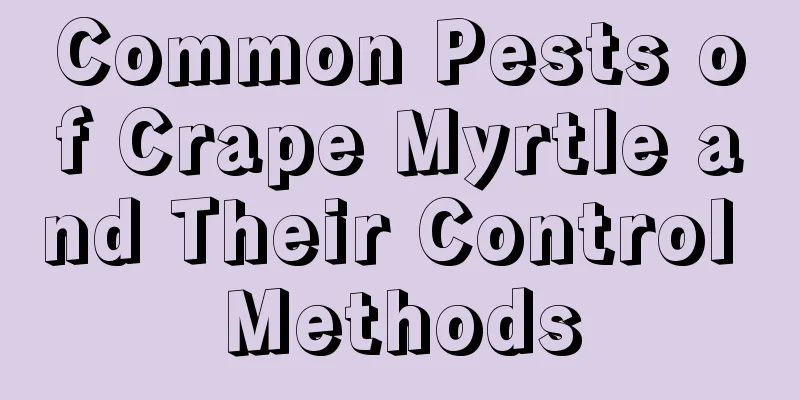Common Pests of Crape Myrtle and Their Control Methods

Aphids infestation on crape myrtleSymptomsThere will be 5-8 generations in the north every year, overwintering as eggs. The initial onset of the disease is in May, and the peak period is in June. Aphids suck sap and damage tender leaves, posing a threat to the growth of crape myrtle. Prevention and treatment methodsIn early spring, scrape off the old bark of the crape myrtle tree, cut off the damaged branches, and burn them in a concentrated manner to eliminate as many overwintering insect eggs as possible. During routine maintenance, cultivation management should be strengthened to reduce the sources of disease. When the aphid infestation is serious, you can choose to spray 1000-2000 times diluted fish vine essence or 1000-1500 times diluted 40% omethoate or 40% acephate to eliminate it, but at the same time, you must also pay attention to avoid drug damage. In places where conditions permit, artificial breeding and releasing natural enemies can be adopted. Free-range raising of multicolored ladybirds or grass beetle larvae are good choices. In addition, you can use color plates to lure and kill winged aphids, or use reflective white tinfoil to keep away migrating aphids. The pests of crape myrtleSymptomsThere are two generations each year, which overwinter as eggs or nymphs. Female adults and nymphs often suck sap from the axils of crape myrtle buds, leaves and branches, causing the branches and leaves to turn black and fall off, which is not conducive to the growth of crape myrtle flowers. In addition, the excrement of this pest can also induce sooty mold disease, which poses a high potential risk. Prevention and treatment methodsIn winter and early spring, prune branches, burn insect-infested branches in a concentrated manner, eliminate insect eggs as much as possible, and manually scrape off any pests found. Strengthen management and quarantine, and apply fertilizers reasonably to enhance the plants' resistance to insects. At the same time, avoid excessive plant density, maintain plant ventilation, and ensure light transmission. You can use the polymer film mixed with the spray and then spray it evenly, which will form a thin film on the surface of the plant, causing the insects to have difficulty breathing and then suffocate to death; or you can use its natural enemy, the red-spotted lip mark insect, to prey and eliminate it. Chemical control can also be adopted when necessary. |
<<: Rose Pests and Their Control
>>: Common pests of Aglaonema and their control
Recommend
How to care for pine bonsai
No water accumulation Pine bonsai can survive wel...
What flowers are suitable for growing in Dongying? What are the city flowers and trees?
1. Climate characteristics of Dongying Dongying h...
Can cactus be exposed to the sun? Can it be exposed to the sun in summer?
Can cactus be exposed to the sun? Cactus needs su...
What to do if the Spathiphyllum flower turns green
1. Normal maintenance Cause: If the flowers of yo...
How to keep cucumber seeds and how to collect seeds
How to save cucumber seeds 45 to 50 days after th...
What are the legends and meanings of dragon bone flower?
1. Flower language and meaning 1. Mighty and domi...
Planting methods and time of cabbage lettuce planting technology (cultivation points)
Suitable planting time for cabbage lettuce Cabbag...
How often should you water succulents?
1. According to the size of the plant If it is a ...
What is the reason for the mucus on Phalaenopsis leaves? What should I do if there is mucus on the plant?
1. Pests cause Reason: If there is mucus on the l...
How to deal with root rot of white orchid
1. Proper watering Its roots are fleshy. If you w...
How to care for newly bought stone lotus
1. How to deal with newly bought stone lotus If y...
How many years does it take for an orange tree to bear fruit?
Introduction to Planting Orange Trees The orange ...
Cultivation methods and precautions of ginseng banyan bonsai
Ginseng ficus bonsai is easy to grow. Do not expo...
Causes and treatments of yellow leaves of cinnabar root
1. Temperature is too low Reason: The origin of C...
How to grow and cultivate the succulent plants of the genus Cynanchum
Growing conditions of succulent plants The succul...









